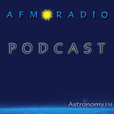
Summary: Show Notes for the 5th of March 2013 (GMT) Title: Speedy Spin on Small Planets Hosts: Ryan, Jesse, Paul Special Event: We fielded live questions from the Warren Astronomical Society (http://www.warrenastro.org/was/) (@WarrenAstro (https://twitter.com/warrenastro)) meeting located at the Cranbrook Institute of Science. This evening's show featured the return of 'the dean,' Paul Delaney, from his trip to the Canary Islands, where he got to visit the largest optical telescope in the world, at 10.4 m. SpaceX was in the news again with its 'little-capsule-that-could,' the Dragon capsule docked with the ISS over the weekend. We also (finally) chatted about the tiny planet Kepler 37-b, and how some astronomers using XMM-Newton and NuSTAR have made a reliable measurement of a super massive black hole's spin....and it's HUGE. See show notes and podcast below. This week in space/astronomy history: 4 March 1979 - Jupiter’s rings discovered http://en.wikipedia.org/wiki/Rings_of_Jupiter (http://en.wikipedia.org/wiki/Rings_of_Jupiter) 5 March 1979 - Voyager 1 flies by Jupiter http://en.wikipedia.org/wiki/Voyager_1 (http://en.wikipedia.org/wiki/Voyager_1) 7 March 1930 - Happy Birthday to Stan Miller of the Yuri -Miller experiments - molecules of life from electricity News: 1. SpaceX’s Dragon docks with ISS, http://www.asc-csa.gc.ca/eng/missions/expedition34-35/blog.asp (http://www.asc-csa.gc.ca/eng/missions/expedition34-35/blog.asp)2. Update on the Russian Meteor Event http://science.nasa.gov/science-news/science-at-nasa/2013/26feb_russianmeteor/ (http://science.nasa.gov/science-news/science-at-nasa/2013/26feb_russianmeteor/)3. Curiosity Corner, with Ryan Marciniak, http://news.cnet.com/8301-11386_3-57572443-76/amid-troubleshooting-curiosity-computer-swap-under-way/ (http://news.cnet.com/8301-11386_3-57572443-76/amid-troubleshooting-curiosity-computer-swap-under-way/)4. Paul returns from the Canary Islands Major Topics Covered: 1. Planet smaller than Mercury discovered http://www.universetoday.com/100122/smallest-exoplanet-yet-discovered-by-listening-to-a-sun-like-star/ (http://www.universetoday.com/100122/smallest-exoplanet-yet-discovered-by-listening-to-a-sun-like-star/) http://www.nature.com/nature/journal/v494/n7438/fig_tab/nature11914_F1.html (http://www.nature.com/nature/journal/v494/n7438/fig_tab/nature11914_F1.html) Dubbed Kepler-37b, the orbiting planet finder has found the smallest known planet orbiting a sun-like star to date. This finding indicates that stellar systems are home to planets both larger and smaller than anything we see in our solar system. Kepler-37b is located 210 light-years away, and orbits its host star every 13 days; the other two planets in the system (37c and 37d) orbit every 21 and 40 days respectively. This planet is definitely inhospitable, due to its very close proximity to its parent star. Technique is everything: this new planet, Kepler-37b, was found using the principles of asteroseismology. Most planets discovered by the Kepler Space Telescope are found using the transit method, i.e., the dip in light from the parent star as the planet passes in front of it. In order to discover this planet, scientists watch the flickers in brightness of the star which are created by stellar-quakes. This project helped inspire the ‘Pale Blue Dot Project.’ http://whitedwarf.org/palebluedot/index.html (http://whitedwarf.org/palebluedot/index.html) 2. Earth sized planets are common! http://keckobservatory.org/news/surprise_earth_sized_planets_are_common#When:01:26:06Z (http://keckobservatory.org/news/surprise_earth_sized_planets_are_common#When:01:26:06Z) Press Release from Keck Observatory 3. Scientists show super massive black hole has large spin http://www.scientificamerican.com/article.cfm?id=monster-black-holes-spin&WT.mc_id=SA_DD_20130228 (http://www.scientificamerican.com/article.cfm?id=monster-black-holes-spin&WT.mc_id=SA_DD_20130228) http://www.
